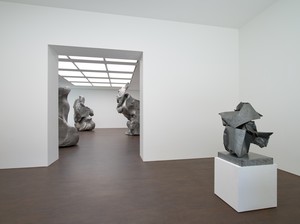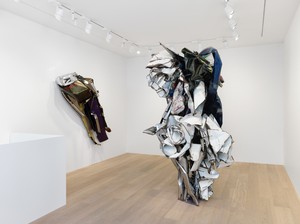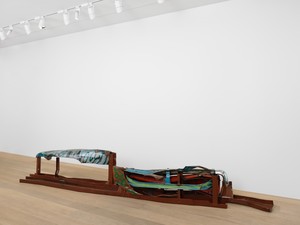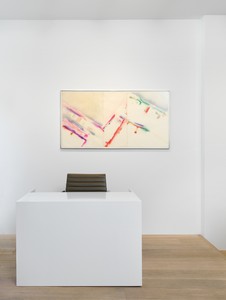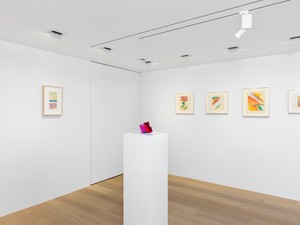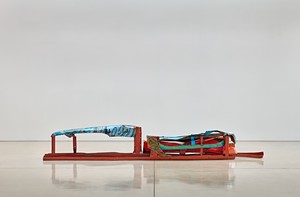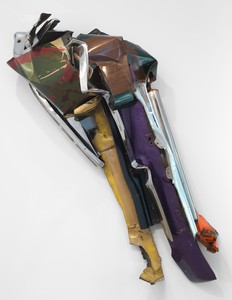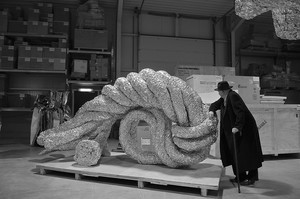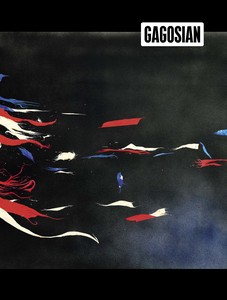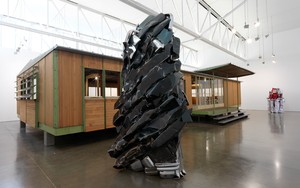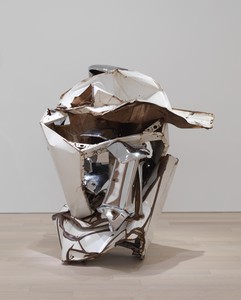If I have a room full of parts, they are like a lot of words. I have to take one piece and put it next to another and find out if it really fits. The poet’s influence is in there.
—John Chamberlain
Gagosian is pleased to present an exhibition of sculptures and works on paper by John Chamberlain.
During his lifetime, Chamberlain was perhaps best known for the distinctive metal sculptures he began making in the late 1950s out of discarded automobile-body parts and other modern industrial detritus. While freely experimenting with other mediums—including galvanized steel, paper bags, Plexiglas, foam rubber, and aluminum foil—he consistently returned to metal car components, which he humorously called “art supplies.” Chamberlain’s works boldly contrast the everyday industrial origin of their materials with a cumulative formal beauty, often underscored by the given paint finish of their constituent parts. The process of construction has its roots in industrial fabrication, given that mechanical crushers often imparted preliminary form to the car parts. Chamberlain’s emphasis on discovered or spontaneous correlations between materials rather than a prescribed idea of composition has often prompted descriptions of his work as three-dimensional Abstract Expressionist paintings. Crumpling, crushing, bending, twisting, painting, and welding the metals to form individual objects, he combined them into imposing aggregations.
With works dating from 1975 to 1988, the exhibition focuses on Chamberlain’s mid-career return to the use of car metal as a sculptural material, as well as his long-term interest in vibrant, colorful expression in two and three dimensions. Chamberlain broke from his pattern of using discarded auto parts in 1965, only to return to it in 1972. At times, his riotous structures would adhere to certain geometries: the wall relief Chamouda (1975) is from a series of painted and chrome-plated steel sculptures that were each tilted to the left at an angle of 45 degrees. Bright pops of colored metal are variously intertwined with glinting steel, and the visual effects shift with the viewer’s movement. Chamberlain also gave structure to otherwise unconstrained abstraction in a series of drawings from 1976, View from the Cockpit. Each drawing comprises three cut pieces of paper collaged vertically and with conflicting patterns of delicate sprayed pigment. The thin center band that bisects the upper and lower halves of every sheet suggests the sequential frames of a film strip, while alluding to the horizon of an indiscernible landscape.
Chamberlain had a keen appreciation of poetry, fostered during a year spent at Black Mountain College in 1955, while Charles Olson was teaching poetry there, and Robert Creeley edited the Black Mountain Review. It was at this time that language began to impact Chamberlain’s aesthetic approach. A strict horizontal format was employed in his later Gondola floor sculptures (1981–85). Evoking the form of the typical Venetian boat gliding through the canals of the city, each sculpture has as part of its armature an automobile chassis, laden with erratic combinations of painted, bent metal. Gondola Walt Whitman (1981–82), like all works in the series, is titled in homage to a writer whom Chamberlain admired. In works from the late 1980s, such as the wall relief Madam Meux (1987), the same playful approach to language is evident in alliteration of the title, while the name also suggests that the sculpture’s graceful curve resembles a supine feline body.
